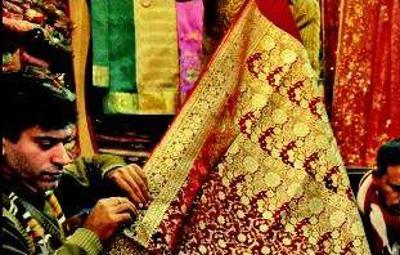
East India Company was basically a commercial enterprise; till the end it continued to make good money by exporting Indian goods. In the 19th century, its monopoly was corroded by the entry of other British traders; but trade continued to be a major activity till its demise in 1858.
But it was an odd bird from its birth. The Spanish and Portuguese adventurers who preceded it were an explicit extension of their home governments; the British crown, on the contrary, kept out of the Company’s affairs abroad. Charles II gave the Company power to judge and punish people in its territory abroad according to the laws of his kingdom in 1661; the power to make locally applicable laws followed.
The injunction assumed that the Company would occupy and own territory. But its territory in India was not virgin territory; it had its own administrative structure, of which the Company became one pillar. So it had two masters; and in so far as the two never talked to each other, it had considerable freedom of manoeuvre. But legislation and administration were not its main business; it tried to minimize the effort it put into them. One way it did so was to use local law where it existed, and import British law where there was no local law.
The two differed greatly in respect of landed property. In 1660, King Charles II abolished personal service due from noblemen and converted it into a monetary obligation; that is how land revenue became the dominant tax in Britain. In India, too, land revenue was the major tax; it was reckoned as a third of agricultural produce under Akbar. But it was not always in cash. And it did not necessarily go to the king; the nobleman delivered his dues in cash or in military service. The feudal structure applied to the Mogul empire, but not necessarily to other, smaller kingdoms. So when Lord Clive defeated the Mogul army in 1765 and took the Diwani of Bengal, the Company had to learn the ins and outs of zamindari.
The lessons it learnt are the main part of Law and the Economy in Colonial India, a new book by Tirthankar Roy and Anand V. Swamy. They are an odd pair. Tirthankar is a first-class economic historian. But he is not a leftist; so he faced discrimination from the academic powers-that-be in India. Finally he got fed up and left India; now he teaches in the London School of Economics. Anand Swamy teaches economics in Williams College. They have been running into each other in conferences, and working together on books once in a while.
Their conclusion is that the Company did not learn the lessons well. Its laws led to thousands of cases in Bengal relating to property, tenancy and rent; the system remained overloaded throughout British rule, and cases took decades. As if property law was not obscure enough, legal proceedings were complicated by succession law, which differed according to religion. They do not say so, but the mess was sorted out after Independence, first by legislation abolishing zamindari, and more slowly by population growth, which reduced the size of holdings.
It is difficult to imagine today that Indians could own slaves till 1843; and once slavery was abolished by law, all they had to do was to give a loan to the slave and turn him into a bonded labourer. That is not surprising, since Britain itself outlawed slavery only in 1811. But slavery served a purpose under conditions of labour shortage, which was commonly faced by plantations in the north-east. There were not enough workers in the area; they had to be brought from far away, most often tribals from Chhota Nagpur, which is now Jharkhand. Loading them into bullock carts and transporting them hundreds of miles cost money; a planter could not afford to bring them and then let them walk over to a neighbouring planter for a higher wage. So planters asked for and got laws which empowered them to jail their workers for not repaying a loan. But maltreating workers also earned a planter a bad reputation that he would rather avoid; so planters who could get and retain workers more easily avoided using penalties. Roy and Swamy deal with these labour market adjustments in some detail.
I found their discussion of contract law fascinating. Before the statification of the Company, Indian governments did not legislate or enforce laws. But commerce had existed for millennia; and where there was trade, there was always scope for cheating and breach of promise. Traders used social networks to deal with these risks; loss of reputation and standing was the punishment for breach of contract. But this could work only with those who had reputation to lose; it could not work with Santhal labourers or indigo farmers. When it came to workers, the Company gave penal powers to their employers. That could not be done with indigo farmers; they were not housed by indigo buyers, and could not be jailed or beaten up. So indigo buyers collected chits documenting debt against various farmers, and when an opportunity arose, sold them off to someone who had greater influence on the debtors. Partly under their influence, a contract act was passed in the 1860s; but few cases were filed under it.
Such are the narratives collected by Roy and Swamy. Their book is neither a treatise on law nor a history book: it does not systematically align legislation and case law, and it does not tell a story. The topics it has chosen are broad; a systematic treatment would take more space. Making a history out of it would require a larger role for the personalities involved; a legal treatise would require links with both legislative and case law. So there is a case for expanding the book.
Roy and Swamy should also try their hand at pathology of Indian law. The Indian judicial system is hugely overloaded, and extremely slow; the two aspects are connected, but slowness is not just due to overload. It is a good deal due to antiquated procedure; for instance, judges let lawyers drone on and on, briefs cite piles of cases unnecessary to make the point, and courts give postponements and adjournments for the asking. There are too many briefless lawyers, and too few judges. High courts reverse a high proportion of lower court judgments, generally on the ground of poor police investigation. Other systems have faced these problems and overcome them.
No one in India has looked critically at the judicial system except Arun Shourie; anyone who thinks of doing so is bound to consider the possibility that he may face judicial bias if he is hauled to court. Roy and Swamy do not have to worry about that. At worst, a book of theirs would be banned in India. But that would not be much of a loss; hardly any book sells more than a thousand or two copies in India, and the publicity would increase the book’s sales outside. If the judicial system is to be repaired, someone has to start somewhere, and no one is better placed to do so than Roy and Swamy.
source: http://www.telegraphindia.com / The Telegraph,Calcutta,India / Front Page> Opinion> Story / Writing On The Wall: Ashok V. Desai / Tuesday – February 14th, 2017







